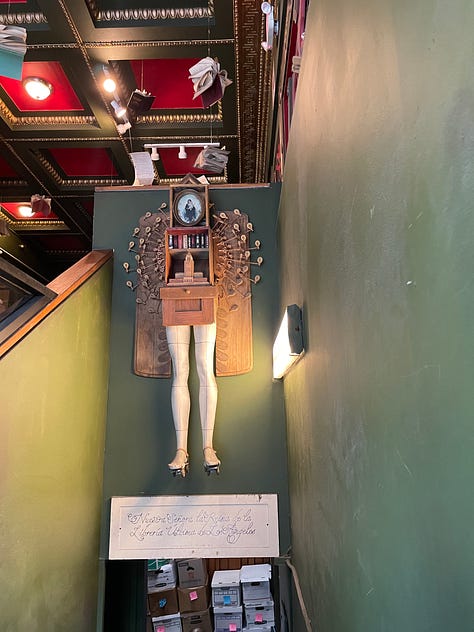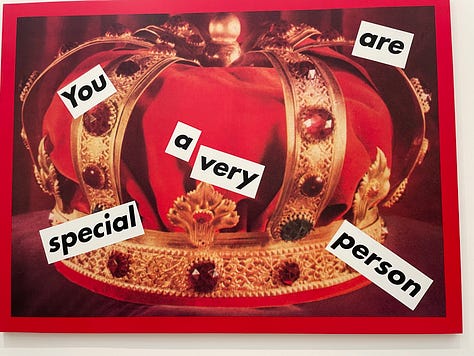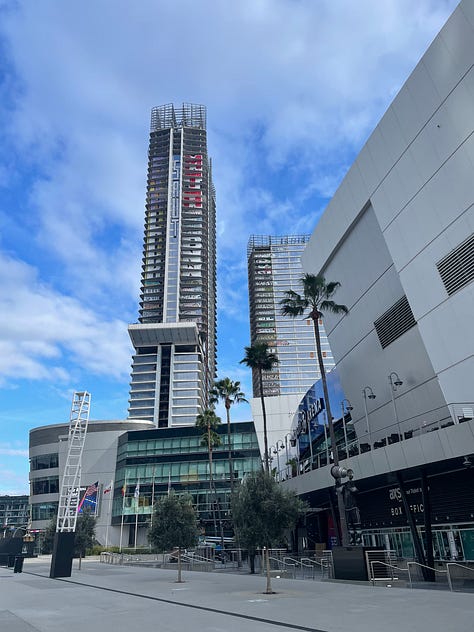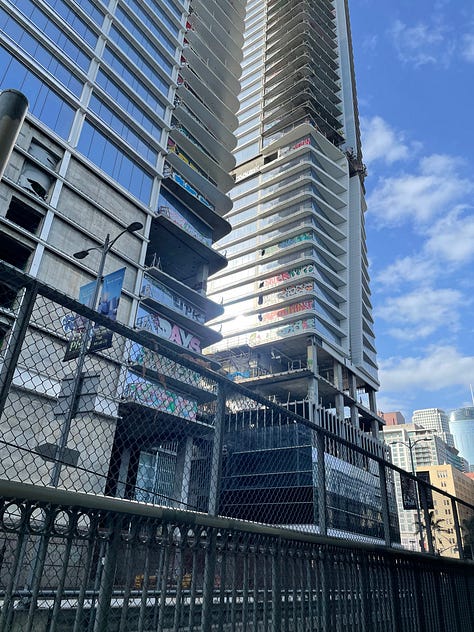Hello friends,
Welcome back to my newsletter where I share short, poorly edited notes about stuff I find interesting.
Right up to the night before I was scheduled to leave for the Association of Writing Professionals and Programs conference in Los Angeles, friends were texting me out of worry. “Are you sure you want to go to the US?” they’d ask. “Have you heard of the actor who was detained for days, the French scientist barred entry because of some texts, the British punk band sent away for unexplained reasons?”
Yes, I’d heard all of it, and I was still sure. I’d decided weeks before to go with my journalist hat (quietly) on, to keep my eyes and ears open, to witness and show solidarity with those who are working, creating and teaching through all this on the inside.
It was, in the end, the easiest border crossing I’d ever experienced. The guard at YVR asked me two questions, no follow-ups.
“Where are you going?”
“L.A.”
“Why are you going there?”
“A conference.”
“Have a nice trip.”
I walked through the gate with a feeling of disorientation and hours before my flight was due to depart.
It would not be exaggerating to say that I have learned more about L.A. from watching John Mulaney’s pleasingly anarchic Netflix talk show Everybody’s Live than I did over my four days there. I didn’t even go to a beach. With the exception of short visits to The Last Bookstore and The Broad Museum, both places I really could have spent whole afternoons slowly ingesting, my days were mostly spent treading the grey carpeted halls of the convention centre, going from panel to panel with a short break to charge my phone in between.



I learned a lot in those panels, felt star struck to be in the presence of writers Carmen Maria Machado, Melissa Febos and Peter Ho Davies (whose book The Art of Revision reconfigured so much of what I understood about the writing process). These were the kind of nerdy, granular conversations about craft that would have sent my 20-something self screaming into the night out of boredom. I can’t get enough of that stuff these days.
There was also a lot of the defiance I was hoping to see of the tightening grasp of authoritarianism. Creative nonfiction writers like myself finding hidden histories in an effort to save the future. Vanessa Angélica Villarreal had a whole time travel analogy that I won’t try to replicate here, but it made me run out and buy her book Magical Realism: Essays on Music, Memory and Fantasy as soon as the Q&A was over.
But what has stayed with me most was something just outside the convention centre, a massive set of towers called Oceanwide Plaza that has sat abandoned mid-construction since 2019. A student had shown me photos of its graffiti-covered balconies last year (most of the interesting art I come across is thanks to students), but I’d never imagined I’d get to see them in person, let alone walk past them several times a day for three days straight. It was fascinating to see up the details of the tags up close, to marvel at the dizzying heights the artists had climbed to complete this collaborative reimagining of urban decay.



There is something mesmerizing about an abandoned construction site. In Edmonton, I used to live near an abandoned mall project that looked like bones of some ancient monster bleached by years of sunlight. While visiting Ucluelet on the West Coast of Vancouver Island a few years ago, I stumbled upon what was supposed to be the Wyndansea golf resort, an ambitious vacation housing development abandoned during the 2008 recession. You could hop over a low fence and walk out to the promontory where Jack Nicklaus had swung the first tee (is that the right language? I don’t know anything about golf) into the ocean in a long-deleted promotional video.
All these abandoned projects being swallowed by nature or art leave me with a keen sense of how small we really are. The extraordinary ambition followed by catastrophic failure strikes me as profoundly human and deeply humbling. They’re like the “Two vast and trunkless legs of stone” in Shelley’s “Ozymandias,” but instead of “lone and level sands” around these wrecks, I see the continuation of life. Uncontrollable.
This will probably be my last trip to the US for a long time. My friends were right—it’s not safe. And it doesn’t feel right vacationing in a place where people’s rights are being steadily eroded in the most horrible ways. But I’m glad I got to see what I did.
Maybe if Shelley’s narrator had listened for a while longer, the traveller from the antique land would have told him about the animals burrowed in the sand around the ruined statue, the flowers waiting to bloom in spring rains and the great-great grandchildren of the survivors of the cruel king’s rule.




